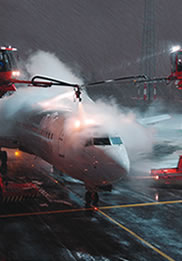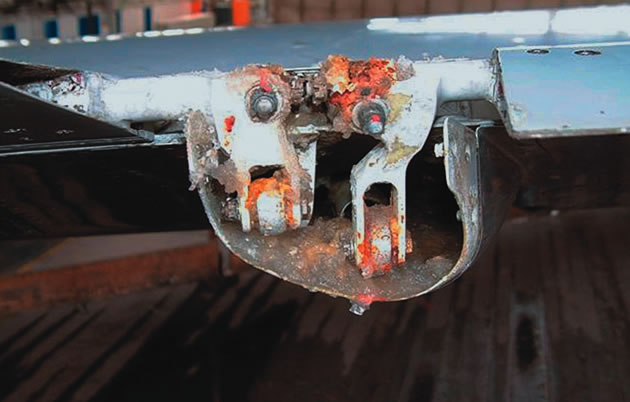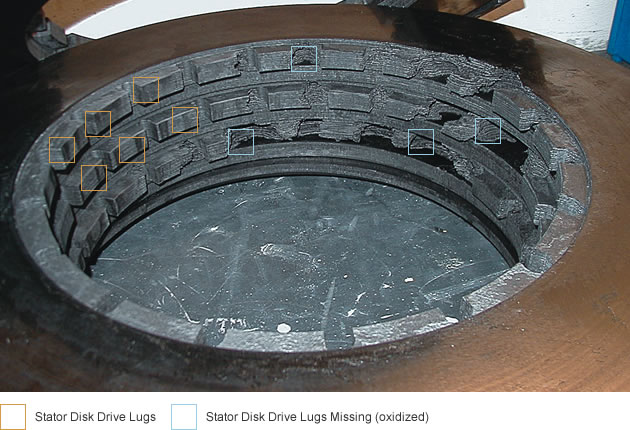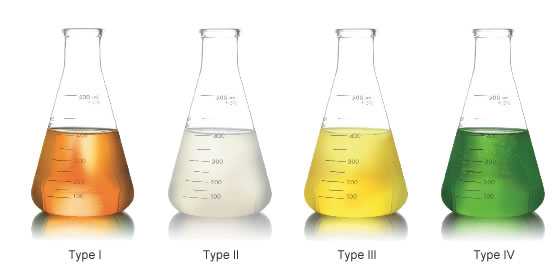

Airline engineering, maintenance, and flight personnel, as well as contracted airplane deicing service providers, need to be aware of the recent developments and recommendations for operating airplanes in winter weather conditions.
By Haruhiko (Harley) Oda, Flight Operations Engineer;
Philip Adrian, 737 Chief Technical Pilot;
Michael Arriaga, Service Engineer;
Lynn Davies, Aerodynamics Engineer;
Joel Hille, Service Engineer;
Terry Sheehan, 737 Technical Pilot; and
E.T. (Tom) Suter, Service Engineer
Airlines need to be aware of recent developments in winter operations and regularly update their cold weather operations procedures.
Safe winter operations require special procedures by airline maintenance, engineering, flight, and deicing personnel. These procedures include deicing, anti-icing, cold weather maintenance, and flight operations.
This article discusses recent developments for winter operations. Intended for both maintenance and flight crews, it provides operators with guidance for reviewing and updating cold weather operations procedures. This article also outlines general concepts and tips on safe winter operations.
The clean-airplane concept
The “clean-airplane” concept is derived from U.S. Federal Aviation Administration (FAA) Federal Aviation Regulation (FAR) 121.629, which states, “No person may take off an aircraft when frost, ice or snow is adhering to the wings, control surfaces, propellers, engine inlets, or other critical surfaces of the aircraft or when the takeoff would not be in compliance with paragraph (c) of this section. Takeoffs with frost under the wing in the area of the fuel tanks may be authorized by the Administrator.”
The FAR also prohibits dispatch or takeoff any time conditions are such that frost, ice, or snow may reasonably be expected to adhere to the airplane, unless the certificate holder has an approved ground deicing/anti-icing program in its operations specifications that includes holdover time (HOT) tables.
The European Aviation Safety Agency (EASA), Transport Canada Civil Aviation (TCCA), and other regulatory authorities have requirements similar to FAR 121.629.
The clean-airplane concept describes an airplane that is aerodynamically clean — that is, free of frozen contaminants. The clean-airplane concept is important because airplane takeoff performance is based upon clean surfaces until liftoff. An airplane is designed using the predictable effects of airflow over clean wings. Contaminants such as frost, ice, or snow adhering to the wings disturb this airflow, resulting in reduced lift, increased drag, increased stall speed, potentially severe roll problems due to uneven lift, and possible abnormal pitch characteristics.
Considerations for maintenance and ground crews
Airplane operation in cold weather conditions can cause special problems because of the effects of frost, ice, snow, slush, and low temperature. The airplane maintenance manual (AMM) provides procedures for removal of contaminants from the airplane and the prevention of subsequent accumulation of frost, ice, snow, or slush. In addition, the operator must ensure that the maintenance procedures for winter operations are appropriate for the weather conditions. (See “The basics of deicing and anti-icing” and “General precautions during winter operations” below.)
Boeing recommends that maintenance and ground crew personnel and contracted airplane deicing service providers acquaint themselves with these recent developments in the area of airplane deicing and anti-icing:
When thickened airplane deicing/anti-icing fluids (i.e., SAE International Types II, III, and IV fluids) dry, they may leave a very fine, powdery residue in critical areas in wings and stabilizers. This residue can rehydrate and expand into gel-like materials that can freeze during flight and cause restrictions in the flight control systems (see fig. 1). (For more information, see AERO first-quarter 2007.) As a result, operators should:
- Be aware of how frequently airplanes are being deiced/anti-iced.
- Be aware of whether a one- or two-step application process is being employed. While recognizing that it is not possible at some locations, Boeing recommends using a two-step process, preferably with Type I fluid and/or hot water as the first step. The application of hot water or heated Type I fluid as the first step of a two-step process has been shown to minimize the formation of residue gels.
- Ensure that proper procedures, including storage, handling, and application of fluids, are being followed by airline personnel or contracted deicing service providers.
- Establish an inspection and cleaning schedule for thickened fluid residue to help ensure that no flight control restrictions will occur. Examine areas such as wing rear spar, wing leading edge devices, horizontal stabilizer rear spar, vertical stabilizer, auxiliary power unit bay, control tabs and linkages (when applicable), and the bilge area of the tail cone. Visually inspect for dry or rehydrated residues in these areas. This inspection and cleaning should be performed in accordance with the recommendations found in the AMM for the specific airplane model involved.
- Apply lubricants and corrosion inhibitors as necessary to the areas where residue cleaning occurs.
Figure 1: Elevator control
Maintenance and ground crews should establish an inspection and cleaning schedule for deicing/anti-icing fluid residue to help ensure that no flight control restrictions will occur.

Airplane deicing/anti-icing fluids and many runway deicing fluids are not compatible — interaction between the two may contribute to the formation of gel residues. When these fluids combine, the salts in some runway fluids enhance the separation of the polymers contained in thickened airplane fluids, leading to a more rapid formation of gel residues.
When runway deicing fluid contaminates thickened airplane anti-icing fluid, there can be significant degradation of the fluid’s performance. HOT values can be reduced and adherence or unacceptable flow-off may result. Runway deicing fluid can get onto the wings and tails by various means, such as spray from the nose gear, spray kicked up by the engine exhaust of other airplanes, or from activation of the engine thrust reversers. Runway deicing fluids are hydroscopic fluids, so they don’t dry out very quickly, causing them to leave a thin wet layer on the wing that can be difficult to see. This implies that the use of hot water or Type I fluid to clean the wing prior to the application of thickened anti-icing fluid (i.e., Type II, III, or IV) is even more important than previously thought. On September 14, 2010, EASA issued Safety Information Bulletin 2010-26 on this subject, recommending the use of the two-step application process.
Catalytic oxidation of carbon brakes may result from exposure of the brakes to alkali metal (i.e., organic salt)-based runway deicers. This may cause severe damage to the brakes and drastically shorten their service life. These runway deicers have also caused corrosion of electrical connectors and hydraulic system components.
In the 1990s, runway deicing materials containing potassium and sodium acetate were introduced (potassium and sodium formate were introduced later) as an alternative to urea and glycol runway deicers. Urea and glycol runway deicers contribute to an increase in the biological and chemical oxygen demand of water systems surrounding airports and are more toxic to aquatic life than the alkali metal-based runway deicers.
Following the introduction of the new runway deicers, some operators reported that their airplanes equipped with carbon brakes began experiencing catalytic oxidation of the carbon brake heat-sink disks (see fig. 2). In order to help operators of airplanes equipped with carbon brakes comply with FAA Special Airworthiness Information Bulletin NM-08-27 and EASA Safety Information Notice 2008-19R1, the main gear wheel removal/installation sections of applicable AMMs have been revised to recommend inspection of the carbon brake assembly for signs of catalytic oxidation damage whenever a wheel and tire assembly is removed.
Figure 2: Damage to carbon brake disks caused by runway deicers
The damaged stator disk drive lugs on this carbon heat-sink demonstrate the type of damage alkali metal-based runway deicers can cause to carbon brake disks.

Boeing has released several service letters regarding the corrosion caused by alkali metal-based runway deicers on various airplane parts, including hydraulic tubes and cadmium-plated electrical connectors.
Considerations for flight crews
Winter or cold weather operations are generally associated with a combination of low temperatures and frost, ice, slush, or snow on the airplane, ramps, taxiways, and runways. The airplane flight manual (AFM) defines icing conditions as when the outside air temperature (OAT) on the ground or total air temperature (TAT) in flight is 50 degrees F (10 degrees C) or less and any of the following exist:
- Visible moisture (e.g., clouds, fog with visibility of one statute mile [1,600 meters] or less, rain, snow, sleet, or ice crystals).
- Ice, snow, slush, or standing water on the ramps, taxiways, or runways.
On runways contaminated by slush, snow, standing water, or ice, the use of fixed derate reduced thrust is permitted, provided that airplane-takeoff-performance planning accounts for the runway surface condition. Use of the assumed temperature reduced thrust method, alone or in combination with a fixed derate, is not permitted on contaminated runways. Boeing does not recommend takeoffs when slush, wet snow, or standing water depth is more than 0.5 inch (13 millimeters) or dry snow depth is more than 4 inches (102 millimeters). (See “General precautions during winter operations.”)
Boeing recommends that flight crews make themselves aware of the following recent developments in the area of winter operations:
Starting with the 2010 winter season, HOT guidelines for Type I fluids include a new set of times to be used when the fluids have been applied to composite surfaces. Testing performed during the last three winter seasons has shown that HOT values for Type I fluids on composite surfaces are significantly shorter (on the order of 30 percent) than for aluminum surfaces. Although this topic has been discussed in the FAA Notice of its “FAA-Approved Deicing Program Updates” for the last two winter seasons, this year both the FAA and TCCA are publishing separate HOT guidelines for composite surfaces. In addition to extensive use of composites on newer models, many older models also have numerous composite surfaces (e.g., spoilers, ailerons, flaps, slats, etc.).
During taxi-out, avoid using reverse thrust on snow- or slush-covered runways, taxiways, or ramps unless absolutely necessary.Using reverse thrust on snow- or slush-covered ground can cause slush, water, and runway deicers to become airborne and adhere to wing surfaces.
Airplane performance
Boeing currently provides two different landing-distance data sets to operators: dispatch data and in-flight operational data.
Dispatch landing data is used during flight planning to determine the maximum landing weight at which the airplane can land within the available landing distance at the destination or alternate airport. This data, referred to as certified data in the AFM, is based on standard-day temperature and accounts for airport pressure altitude and runway wind. However, it does not account for the effect of thrust reversers or runway slopes. Non-dry runway conditions are accounted for by factoring the dry runway dispatch landing-distance data.
In-flight operational data is published as advisory normal-configuration landing distance data in the performance in-flight section of a quick reference handbook (QRH). The data is provided as unfactored data for operators who use FAA requirements. The advisory data in the QRH for operators who use Joint Aviation Authorities or EASA requirements includes a 1.15 factor for non-dry runway conditions. The advisory data provided by Boeing is based on the use of reverse thrust and a 1,000-foot (305-meter) flare distance.
The FAA has chartered an aviation rulemaking committee (ARC) on takeoff and landing performance assessment (TALPA) to ensure that industry practices have adequate guidance and regulation for operation on non-dry, non-wet runways (i.e., contaminated runways). Based on the recommendations made by the ARC, the advisory normal-configuration landing-distance data for the 747-8 and 787 will include the following:
- Braking action and runway surface condition descriptions.
- 7-second air (flare) distance.
- A 1.15 factor for operators that use FAA requirements.
The 787 and 747-8 QRH advisory data will be based on the TALPA ARC recommendations. Changes to the QRH advisory data for other models, such as the 777 and the Next-Generation 737, will await final rulemaking. However, Boeing can provide guidance on how existing QRH normal-configuration landing data can be adjusted to meet the intention of the TALPA ARC recommendations.
Summary
Airlines need to be aware of recent developments in winter operations and review and update their cold weather operations procedures accordingly.
For more information, please contact Harley Oda.




